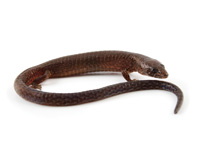Abstract
The present study describes a new species of Arcoscalpellum Hoek, 1907, and a new species of Gymnoscalpellum Newman & Ross, 1971, collected by deep-sea expeditions led by the Muséum national d’Histoire naturelle (Paris) in the Coral Sea off New Caledonia, Papua New Guinea (PNG), the Solomon Islands and Vanuatu. Arcoscalpellum epeeum sp. nov. differs from all described species of Arcoscalpellum by the presence of a long, sharp, sword-shaped carina, which extends beyond the apices of the terga by 1/3 to 1/4 of their length. The species is dioecious, with large females and dwarf males that are sac-like, lack shell plates and are housed in paired receptacles at the inner edges of the scutal plates. Arcoscalpellum epeeum sp. nov. was collected in the waters of New Caledonia and Vanuatu. Gymnoscalpellum indopacificum sp. nov. differs from the six currently described species of Gymnoscalpellum by having a very small inframedian latus and a branched upper latus. The species is dioecious, with large females and dwarf males, the latter composed of 4 shell plates and housed in paired receptacles at the inner edges of the scutal plates. The penis of the dwarf males of G. indopacificum sp. nov. is about 0.8 of the total length of the male and has five side branches extending out along its length. Gymnoscalpellum indopacificum sp. nov. is distributed in the waters of Papua New Guinea, the Solomon Islands and Vanuatu, and represents the first record of this genus in the Indo-Pacific region.

